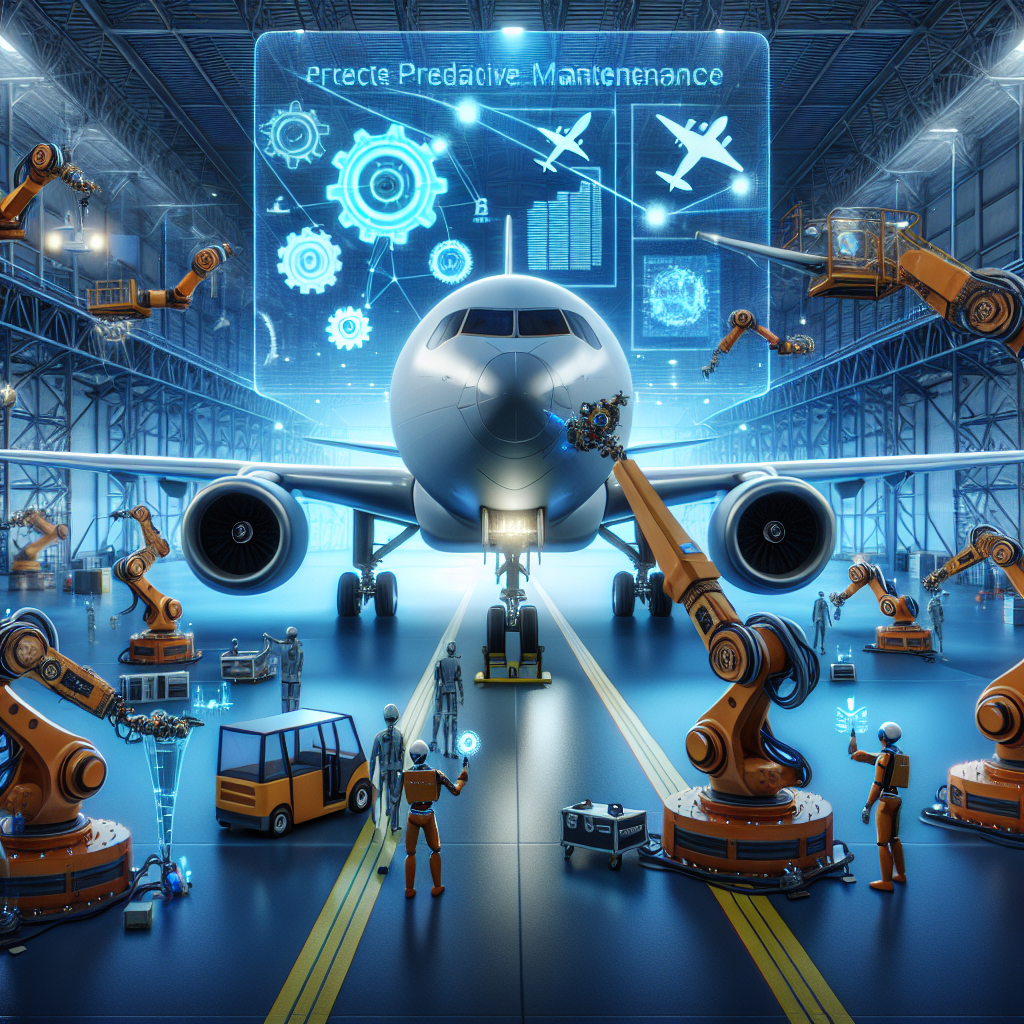AI-Powered Predictive Maintenance for Aircraft in the Transportation Industry
The transportation industry is constantly evolving, with new technologies being developed to improve efficiency, safety, and overall performance. One area that has seen significant advancements in recent years is predictive maintenance for aircraft. By utilizing artificial intelligence (AI) and machine learning algorithms, airlines and maintenance providers can now predict when components are likely to fail, allowing them to proactively address issues before they cause delays or safety concerns.
Predictive maintenance has become a game-changer for the aviation industry, as it allows airlines to minimize downtime, reduce maintenance costs, and improve overall safety. In this article, we will explore how AI-powered predictive maintenance is revolutionizing the way aircraft are maintained and the benefits it brings to the transportation industry.
How Does AI-Powered Predictive Maintenance Work?
AI-powered predictive maintenance involves using machine learning algorithms to analyze data collected from various sensors and monitoring systems on an aircraft. These algorithms can detect patterns and anomalies in the data that may indicate potential issues with the aircraft’s components. By continuously monitoring the aircraft’s performance, AI systems can predict when a component is likely to fail and alert maintenance crews to take proactive action.
The data used in predictive maintenance can come from a variety of sources, including sensors on the aircraft’s engines, landing gear, avionics systems, and other critical components. These sensors collect information such as temperature, pressure, vibration, and other key indicators of the component’s health. By analyzing this data in real-time, AI algorithms can identify trends and patterns that may indicate a potential problem.
Once a potential issue is detected, the AI system can generate alerts for maintenance crews, who can then take action to address the problem before it escalates. This proactive approach to maintenance helps airlines avoid costly delays and ensures that aircraft remain in optimal condition.
Benefits of AI-Powered Predictive Maintenance for Aircraft
There are several key benefits of using AI-powered predictive maintenance for aircraft in the transportation industry. Some of the most significant advantages include:
1. Cost Savings: By predicting when components are likely to fail, airlines can avoid costly unscheduled maintenance and minimize downtime. This can result in significant cost savings for airlines and maintenance providers.
2. Improved Safety: Predictive maintenance helps airlines identify potential issues before they become safety concerns. By addressing problems proactively, airlines can ensure that their aircraft remain safe and reliable for passengers and crew.
3. Increased Efficiency: AI-powered predictive maintenance allows airlines to optimize their maintenance schedules and resources. By focusing on the most critical components at the right time, airlines can improve operational efficiency and reduce overall maintenance costs.
4. Enhanced Customer Experience: By minimizing delays and cancellations due to maintenance issues, airlines can provide a more reliable and seamless travel experience for passengers. This can help airlines build customer loyalty and satisfaction.
5. Data-Driven Decision-Making: Predictive maintenance provides airlines with valuable insights into the health and performance of their aircraft. By analyzing this data, airlines can make more informed decisions about maintenance strategies and resource allocation.
FAQs about AI-Powered Predictive Maintenance for Aircraft
Q: How accurate are AI algorithms in predicting maintenance issues?
A: AI algorithms have been shown to be highly accurate in predicting maintenance issues for aircraft. By analyzing vast amounts of data in real-time, AI systems can detect patterns and anomalies that may indicate potential problems with aircraft components.
Q: How does predictive maintenance differ from traditional maintenance approaches?
A: Traditional maintenance approaches are typically reactive, meaning that maintenance is performed after a component has already failed or shown signs of wear. Predictive maintenance, on the other hand, is proactive and aims to identify potential issues before they cause downtime or safety concerns.
Q: Can predictive maintenance be applied to all types of aircraft?
A: Yes, predictive maintenance can be applied to a wide range of aircraft, including commercial airliners, cargo planes, helicopters, and private jets. The key is to have the necessary sensors and monitoring systems in place to collect the data needed for analysis.
Q: What are some challenges of implementing AI-powered predictive maintenance for aircraft?
A: Some challenges of implementing AI-powered predictive maintenance for aircraft include the need for advanced sensor technology, data integration across different systems, and the training of maintenance crews to interpret and act on predictive maintenance alerts.
Q: How can airlines get started with AI-powered predictive maintenance?
A: Airlines looking to implement AI-powered predictive maintenance can start by assessing their current maintenance processes and identifying areas where predictive maintenance can provide the most value. They can then work with technology providers to implement the necessary sensors, monitoring systems, and AI algorithms.
In conclusion, AI-powered predictive maintenance is transforming the way aircraft are maintained in the transportation industry. By leveraging AI and machine learning algorithms, airlines can predict when components are likely to fail and take proactive action to address issues before they cause delays or safety concerns. The benefits of predictive maintenance, including cost savings, improved safety, and increased efficiency, make it a valuable tool for airlines looking to optimize their maintenance practices and provide a better travel experience for passengers.

